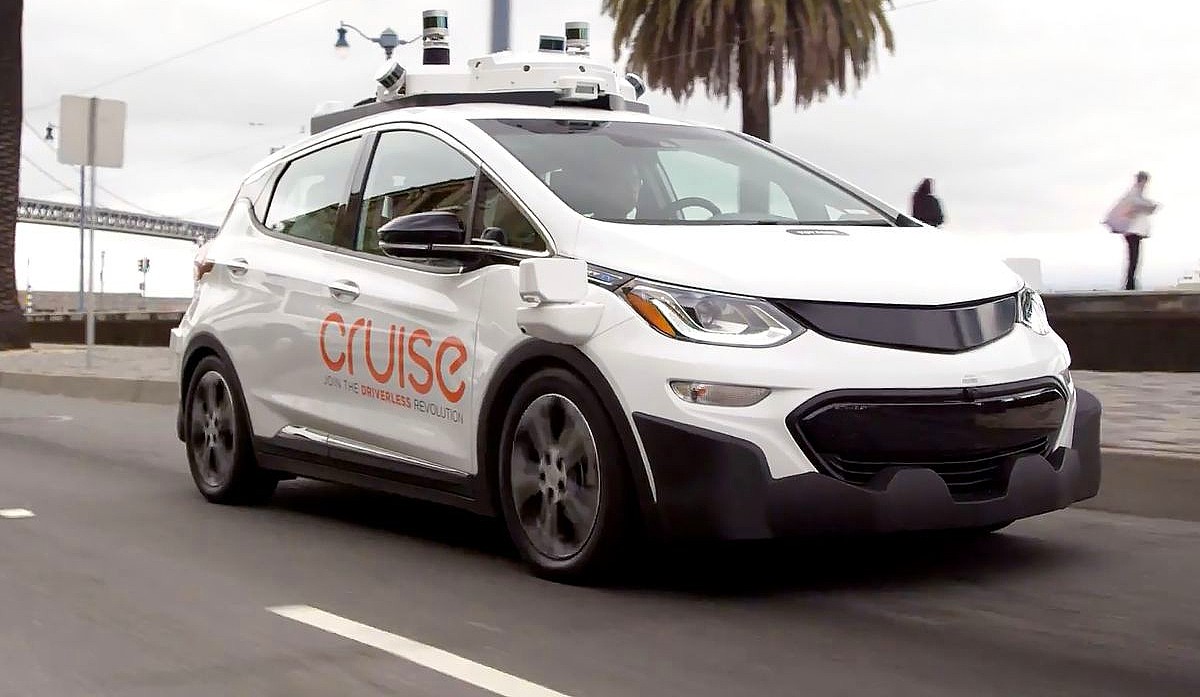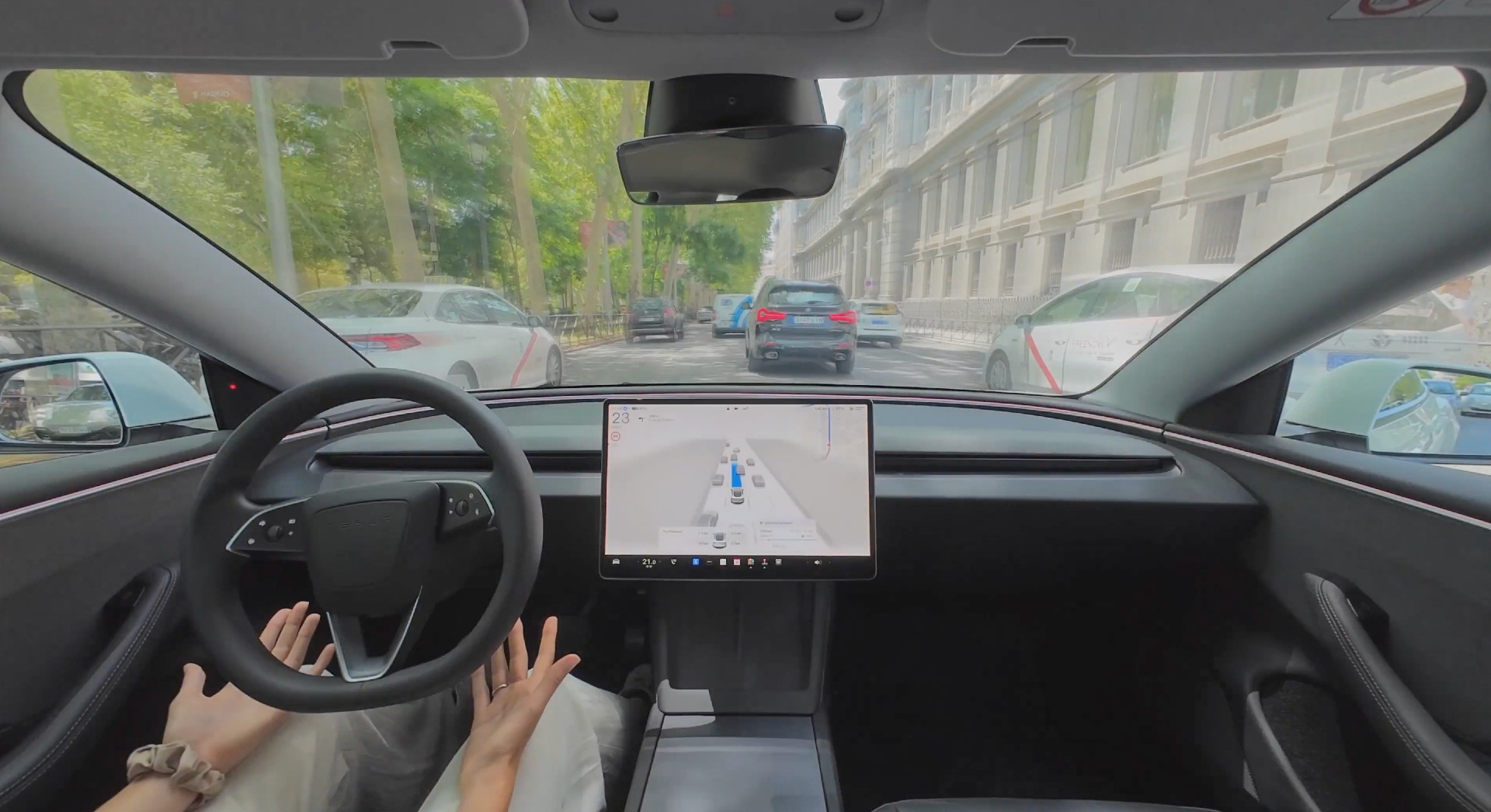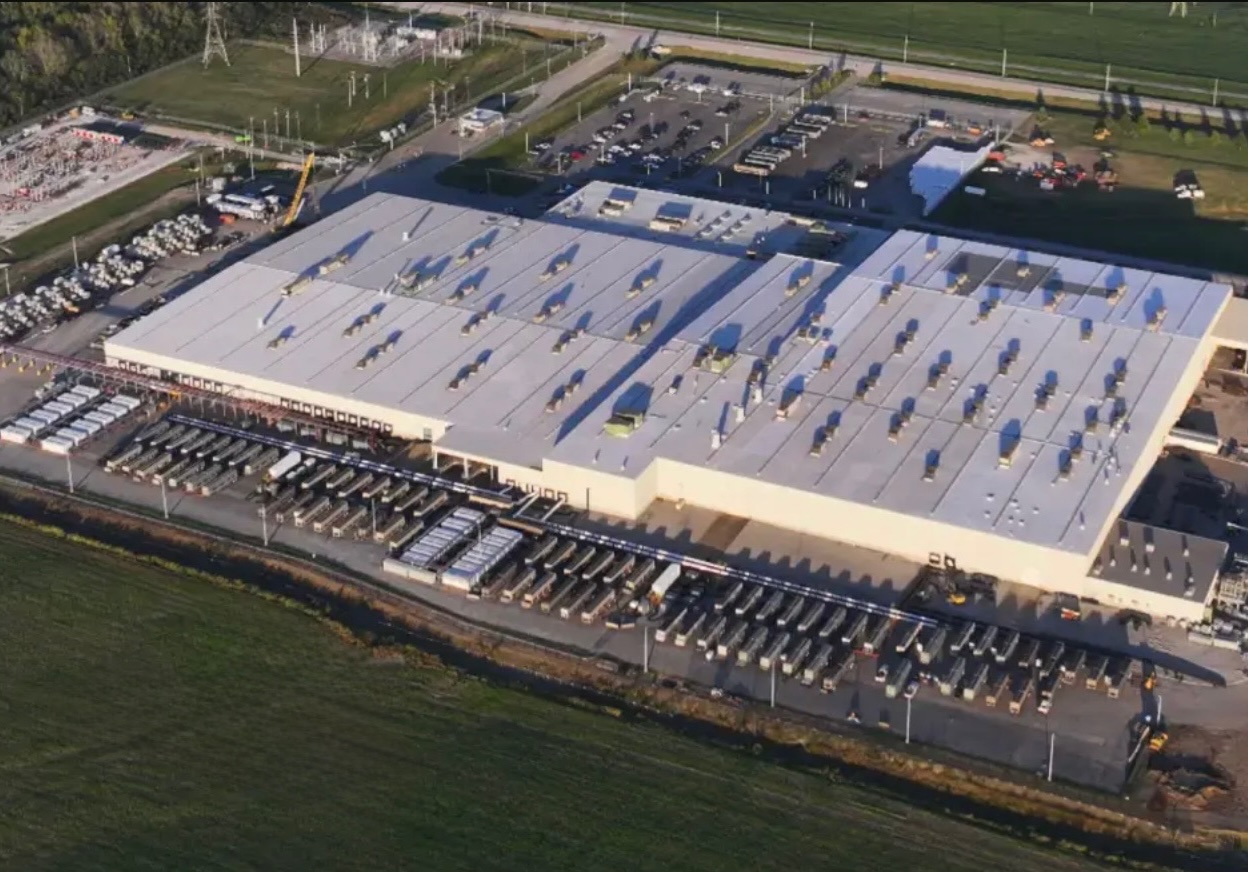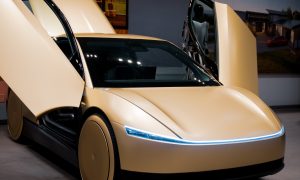

News
GM’s Mary Barra stands by Cruise’s cautious strategy amid Tesla’s full self-driving push
A recent interview with GM CEO Mary Barra from Axios has provided some of the executive’s insights about full self-driving solutions, competition from Tesla, and the Detroit-based company’s strategy for the deployment of its autonomous driving tech. Barra proved conservative, emphasizing that GM will not deploy its full self-driving suite until it is safer than a human driver.
The emergence of full self-driving technologies is all but inevitable at this point, with companies such as Waymo and electric car makers such as Tesla actively pursuing the development and refinement of autonomous driving solutions. Among the industry’s players, Tesla appears to have the momentum, as the company has the largest amount of real-world driving data gathered from hundreds of thousands of vehicles currently on the road. Augmented by the rollout of Tesla’s custom self-driving computer, Elon Musk has been optimistic with the company’s full self-driving rollout plans. Musk has stated that the company’s FSD suite will be “feature complete” by the end of 2019, and that it will have around a million vehicles capable of being used as autonomous “robotaxis” next year.
When asked by the publication about the competition from Tesla and if it is essential for a company to be the first to deploy an autonomous driving system, the GM CEO response was cautious. “We want to be safe. And so that’s what’s motivating us. We understand this is life-changing technology,” Barra said, later adding that “there are so many different ways that we can improve our customers’ lives by having this technology, not only from a safety, but from a productivity (standpoint), what they can do. But what they do, we want to make sure they do safely.”
Barra’s rather conservative statements in her recent interview feature a rather different tone than her previous forecasts for GM’s full self-driving solutions. Speaking at the Dealbook conference last November, Barra stated that GM was on schedule to deploy its full self-driving technology in 2019. “We’re on track, with our rate of learning, to be able to do that next year,” she said. During her segment, Barra noted that GM had a strategy to show that its vehicles are safer than human drivers. She also mentioned that GM Cruise’s autonomous cars were already capable of running safely at around 30 mph, though the service was limited to a small area.
GM eventually softened its stance on its 2019 target release. In a statement to The Detroit News in April, GM noted that Cruise’s driverless taxi service would be “gated by safety” when it goes get deployed. A report from The Information published this June also suggested that in April, GM Cruise’s full self-driving technology experienced a massive failure in the presence of Honda Motor CEO Takahiro Hachigo, a major investor in the company. During the demo, the vehicle’s autonomous driving system reportedly stopped, forcing the car’s backup driver to take control. The vehicle then refused to reactivate, forcing the Honda CEO to wait until he was picked up by an operational GM Cruise autonomous car.
Amidst these reports, Barra did not commit to a launch date for the company’s driverless vehicle service. Nevertheless, in her Axios interview, Barra stated that she does not regret the company’s aggressive 2019 target. “It’s a rallying cry. And I think it’s been motivational,” she said.
While GM Cruise might have less real-world miles compared to Tesla and Waymo, the self-driving unit of the Detroit-based carmaker has attracted a notable number of investors nonetheless. In its latest fundraising round alone, GM Cruise was valued at $19 billion on its own. That’s quite impressive, considering the company’s progress with its technology so far. Tesla, on the other hand, is valued at $39 billion as of writing, and that covers the company’s electric vehicle and energy storage business, as well as its full self-driving technology. This was addressed in a previous note from Morgan Stanley analyst Adam Jonas, who noted that TSLA investors are “undervaluing” the company’s autonomous driving systems. “We believe investors underappreciate/undervalue Tesla’s Autonomy business. Many investors to whom we speak do not explicitly include Tesla’s Autonomy business in their valuation of the company,” Jonas said.
Elon Musk
Why Tesla’s Q3 could be one of its biggest quarters in history
Tesla could stand to benefit from the removal of the $7,500 EV tax credit at the end of Q3.

Tesla has gotten off to a slow start in 2025, as the first half of the year has not been one to remember from a delivery perspective.
However, Q3 could end up being one of the best the company has had in history, with the United States potentially being a major contributor to what might reverse a slow start to the year.
Earlier today, the United States’ House of Representatives officially passed President Trump’s “Big Beautiful Bill,” after it made its way through the Senate earlier this week. The bill will head to President Trump, as he looks to sign it before his July 4 deadline.
The Bill will effectively bring closure to the $7,500 EV tax credit, which will end on September 30, 2025. This means, over the next three months in the United States, those who are looking to buy an EV will have their last chance to take advantage of the credit. EVs will then be, for most people, $7,500 more expensive, in essence.
The tax credit is available to any single filer who makes under $150,000 per year, $225,000 a year to a head of household, and $300,000 to couples filing jointly.
Ending the tax credit was expected with the Trump administration, as his policies have leaned significantly toward reliance on fossil fuels, ending what he calls an “EV mandate.” He has used this phrase several times in disagreements with Tesla CEO Elon Musk.
Nevertheless, those who have been on the fence about buying a Tesla, or any EV, for that matter, will have some decisions to make in the next three months. While all companies will stand to benefit from this time crunch, Tesla could be the true winner because of its sheer volume.
If things are done correctly, meaning if Tesla can also offer incentives like 0% APR, special pricing on leasing or financing, or other advantages (like free Red, White, and Blue for a short period of time in celebration of Independence Day), it could see some real volume in sales this quarter.
You can now buy a Tesla in Red, White, and Blue for free until July 14 https://t.co/iAwhaRFOH0
— TESLARATI (@Teslarati) July 3, 2025
Tesla is just a shade under 721,000 deliveries for the year, so it’s on pace for roughly 1.4 million for 2025. This would be a decrease from the 1.8 million cars it delivered in each of the last two years. Traditionally, the second half of the year has produced Tesla’s strongest quarters. Its top three quarters in terms of deliveries are Q4 2024 with 495,570 vehicles, Q4 2023 with 484,507 vehicles, and Q3 2024 with 462,890 vehicles.
Elon Musk
Tesla Full Self-Driving testing continues European expansion: here’s where
Tesla has launched Full Self-Driving testing in a fifth European country ahead of its launch.

Tesla Full Self-Driving is being tested in several countries across Europe as the company prepares to launch its driver assistance suite on the continent.
The company is still working through the regulatory hurdles with the European Union. They are plentiful and difficult to navigate, but Tesla is still making progress as its testing of FSD continues to expand.
Today, it officially began testing in a new country, as more regions open their doors to Tesla. Many owners and potential customers in Europe are awaiting its launch.
On Thursday, Tesla officially confirmed that Full Self-Driving testing is underway in Spain, as the company shared an extensive video of a trip through the streets of Madrid:
Como pez en el agua …
FSD Supervised testing in Madrid, Spain
Pending regulatory approval pic.twitter.com/txTgoWseuA
— Tesla Europe & Middle East (@teslaeurope) July 3, 2025
The launch of Full Self-Driving testing in Spain marks the fifth country in which Tesla has started assessing the suite’s performance in the European market.
Across the past several months, Tesla has been expanding the scope of countries where Full Self-Driving is being tested. It has already made it to Italy, France, the Netherlands, and Germany previously.
Tesla has already filed applications to have Full Self-Driving (Supervised) launched across the European Union, but CEO Elon Musk has indicated that this particular step has been the delay in the official launch of the suite thus far.
In mid-June, Musk revealed the frustrations Tesla has felt during its efforts to launch its Full Self-Driving (Supervised) suite in Europe, stating that the holdup can be attributed to authorities in various countries, as well as the EU as a whole:
Tesla Full Self-Driving’s European launch frustrations revealed by Elon Musk
“Waiting for Dutch authorities and then the EU to approve. Very frustrating and hurts the safety of people in Europe, as driving with advanced Autopilot on results in four times fewer injuries! Please ask your governing authorities to accelerate making Tesla safer in Europe.”
Waiting for Dutch authorities and then the EU to approve.
Very frustrating and hurts the safety of people in Europe, as driving with advanced Autopilot on results in four times fewer injuries!
Please ask your governing authorities to accelerate making Tesla safer in Europe. https://t.co/QIYCXhhaQp
— Elon Musk (@elonmusk) June 11, 2025
Tesla said last year that it planned to launch Full Self-Driving in Europe in 2025.
Elon Musk
xAI’s Memphis data center receives air permit despite community criticism
xAI welcomed the development in a post on its official xAI Memphis account on X.

Elon Musk’s artificial intelligence startup xAI has secured an air permit from Memphis health officials for its data center project, despite critics’ opposition and pending legal action. The Shelby County Health Department approved the permit this week, allowing xAI to operate 15 mobile gas turbines at its facility.
Air permit granted
The air permit comes after months of protests from Memphis residents and environmental justice advocates, who alleged that xAI violated the Clean Air Act by operating gas turbines without prior approval, as per a report from WIRED.
The Southern Environmental Law Center (SELC) and the NAACP has claimed that xAI installed dozens of gas turbines at its new data campus without acquiring the mandatory Prevention of Significant Deterioration (PSD) permit required for large-scale emission sources.
Local officials previously stated the turbines were considered “temporary” and thus not subject to stricter permitting. xAI applied for an air permit in January 2025, and in June, Memphis Mayor Paul Young acknowledged that the company was operating 21 turbines. SELC, however, has claimed that aerial footage shows the number may be as high as 35.
Critics are not giving up
Civil rights groups have stated that they intend to move forward with legal action. “xAI’s decision to install and operate dozens of polluting gas turbines without any permits or public oversight is a clear violation of the Clean Air Act,” said Patrick Anderson, senior attorney at SELC.
“Over the last year, these turbines have pumped out pollution that threatens the health of Memphis families. This notice paves the way for a lawsuit that can hold xAI accountable for its unlawful refusal to get permits for its gas turbines,” he added.
Sharon Wilson, a certified optical gas imaging thermographer, also described the emissions cloud in Memphis as notable. “I expected to see the typical power plant type of pollution that I see. What I saw was way worse than what I expected,” she said.
-

 Elon Musk3 days ago
Elon Musk3 days agoTesla investors will be shocked by Jim Cramer’s latest assessment
-

 News1 week ago
News1 week agoTesla Robotaxi’s biggest challenge seems to be this one thing
-

 News2 weeks ago
News2 weeks agoTexas lawmakers urge Tesla to delay Austin robotaxi launch to September
-

 Elon Musk2 weeks ago
Elon Musk2 weeks agoFirst Look at Tesla’s Robotaxi App: features, design, and more
-

 Elon Musk2 weeks ago
Elon Musk2 weeks agoxAI’s Grok 3 partners with Oracle Cloud for corporate AI innovation
-

 News2 weeks ago
News2 weeks agoSpaceX and Elon Musk share insights on Starship Ship 36’s RUD
-

 News2 weeks ago
News2 weeks agoWatch Tesla’s first driverless public Robotaxi rides in Texas
-

 News2 weeks ago
News2 weeks agoTesla has started rolling out initial round of Robotaxi invites















